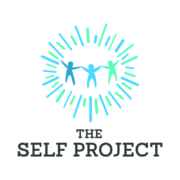Rules of Engagement for Families (and Teachers)
As my kids got older, I began to realize that it was going to be necessary to change the way we addressed certain issues in our home. While I still encouraged lots of discussion and offered to be present and support my teens as they worked out their own differences, it became clear to me that their unique personalities meant that they approached this in very different ways. This tended to make conversations turn in to conflict, if only because one of my daughters is someone who wants to hash things out instantly, in the moment, and stay until it’s done, while the other one prefers to walk away when emotions get high, re-center herself, and decide if it’s a fight worth having. After a few ugly scenes (complete with doors slamming and tears), we sat down to create a set of ground rules that would work for everyone, and I think they’re pretty universal, so I’ve adopted them as rules for any classroom or student gathering I’m in that has a conflict of some sort. Here they are:
- Everyone at the table is here because they want to be (not because they are forced to be or guilted into it). Force and guilt/shame set up a power dynamic that means the discussion is doomed to fail before it even starts.
- Everyone has the same rights – we are all equals and we all deserve to be heard and our perspectives respected. It doesn’t matter how old someone is or what their status in the family/classroom is. There are no trump cards if we are truly interested in working through this to everyone’s satisfaction. If someone thinks that they’re bound to be over-ruled at some point, there’s no point in engaging. And if anyone else believes that they ultimately get to decide what happens, there’s no point in them listening to the others.
- Even if we can’t understand someone else’s point of view or feelings, we respect their right to have it and we all agree not to belittle anyone because of it. No gaslighting. Your reaction might seem disproportionate or even absurd to me, but since I’m not living in your skin, I don’t get to tell you how you should feel and I certainly don’t get to shame you for feeling the way you feel.
- No name-calling, ultimatums, demands, hate speech. This one might seem patently obvious, but often when we get in to a situation that seems to be going nowhere, we resort to these tactics to ratchet up the urgency. They’re not helpful at all if what we really want is to solve the problem at hand.
- We all agree to work our hardest to define a common goal for this situation and work toward it. Bringing up past resentments is not okay because it derails the conversation. There may well be patterns of behavior you have noticed over time, but if you want to have a conversation about this incident or issue right now, you need to stay in this moment. No fair blaming or shaming someone for something they did in the past. Period.
- No eye-rolling or turning away or other negative body language. This sends the clear message that you’re not listening or you’re not interested in really understanding where the other person is coming from. If you’re not, there’s no reason for you to be here.
- If someone decides they can’t be part of the conversation right now for any reason, they are allowed to leave, but they agree to be part of the conversation in the near future so that bad feelings won’t fester and things won’t remain unsolved. ‘Nuff said.
- Everyone agrees to own their part of the issue and take responsibility for their words or actions that might have caused others pain or frustration. There are multiple sides to every conflict. Nobody is ever all right or all wrong.
- Blaming and shaming, labeling someone, and using words like “always” and “never” will not move us forward and should be avoided. These are all shortcuts to ending a conversation and an indication that you’re making assumptions about the other person’s character or intent. You won’t get anywhere if you use these tactics.






Leave a Reply
Want to join the discussion?Feel free to contribute!